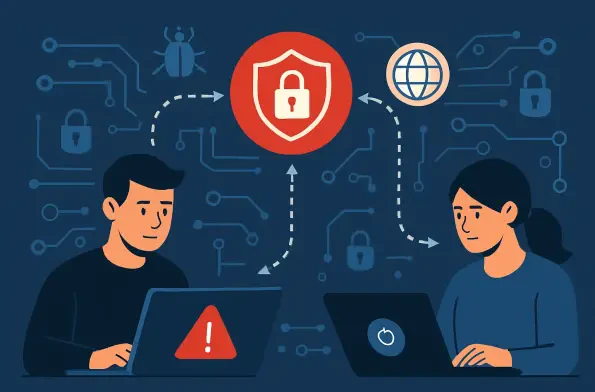In an era where a single hour of delay in responding to a cyber incident can drain a company of $114,000, the digital battlefield is unforgiving, and the stakes have never been higher. Picture a major corporation, mid-attack, unable to share critical threat data with federal agencies due to legal fears—systems falter, losses mount, and trust erodes. This scenario was narrowly averted with the recent temporary extension of the Cybersecurity Information Sharing Act (CISA 2015), a lifeline for businesses and government collaboration. This brief reprieve offers a moment to breathe, but for how long?
The significance of this extension cannot be overstated in a landscape where 84% of Chief Information Security Officers (CISOs) view a successful cyber-attack as inevitable. With the law’s lapse on September 30 of this year, the cybersecurity community held its breath, fearing disrupted partnerships and heightened risks. Now, with a short-term renewal until January 30, 2026, there’s a window to rebuild trust and share vital intelligence. This development is not just a policy update—it’s a critical pause in a relentless storm of digital threats, demanding attention to both immediate relief and looming uncertainties.
A Vital Shield in a Relentless Cyber War
The digital realm is a warzone, with businesses and government entities constantly under siege from sophisticated cyber threats. CISA 2015 has long served as a protective barrier, enabling companies to share threat intelligence with federal partners and peers without the specter of legal repercussions. Its temporary expiration earlier this year sent shockwaves through the industry, halting critical data exchanges and exposing vulnerabilities in collaborative defense mechanisms.
This law’s framework is essential for maintaining a united front against attacks that can cripple infrastructure overnight. For instance, a major ransomware incident targeting a utility provider could escalate into a national crisis without timely shared intelligence. The extension, passed through the Continuing Appropriations Act on November 9, offers a chance to resume these exchanges, but it also highlights how fragile the system remains without a permanent solution.
The Backbone of Cybersecurity Collaboration
Since its inception, CISA 2015 has been a cornerstone for fostering trust between the private sector and government in combating cyber threats. By providing liability protection, it encourages voluntary participation in programs like the Automated Indicator Sharing (AIS), where real-time threat data can save millions in potential losses. The brief lapse in the law disrupted this synergy, particularly with federal agencies, stalling progress on joint defense initiatives.
The importance of such collaboration is evident in stark financial terms—delays in incident response rack up costs at an alarming rate. A survey by Binalyze underscores that an hour’s delay averages $114,000 in damages for U.S. organizations. Without the legal clarity CISA 2015 provides, hesitation in sharing data could amplify these losses, making its reinstatement a pivotal, if temporary, victory for cybersecurity resilience.
Breaking Down the Extension’s Immediate Effects
The extension of CISA 2015 until early next year, enacted through recent legislation, acts as a stopgap measure for an industry on edge. Businesses can once again engage in voluntary threat data sharing through AIS without fear of lawsuits, a relief given the high stakes involved. This immediate impact is measurable—participation in sharing programs is expected to rebound, potentially averting millions in damages from delayed responses.
However, the effects are not universally positive across all sectors of collaboration. While private groups like Health-ISAC maintained internal data sharing during the lapse, interactions with federal partners such as the FBI and the Department of Homeland Security (DHS) saw a sharp decline. Staffing cuts at these agencies, combined with legal uncertainty, have strained essential relationships, revealing cracks in the system that the extension only partially mends.
The shadow of impermanence looms large over this relief. With just a few months until the next deadline, the absence of a long-term reauthorization keeps businesses wary of investing fully in collaborative efforts. National losses tied to unclear sharing policies, estimated at $48.1 billion over recent years, serve as a grim reminder of what’s at risk if a lasting fix isn’t secured soon.
Industry Voices Weigh In on the Stakes
Cybersecurity leaders have greeted the extension with a mix of relief and urgency, emphasizing the need for more than a temporary bandage. Errol Weiss, Chief Security Officer at Health-ISAC, labels it a “temporary patch,” pushing for a reauthorization spanning a decade or longer to cement stability. His perspective reflects a broader frustration among professionals who see the constant uncertainty as a barrier to effective planning.
Data from the “State of Cybersecurity Investigations” report by Binalyze adds weight to these concerns, revealing that 84% of CISOs expect a successful attack on their organizations. Compounding this, only 36% of incidents can be effectively addressed, with 90% of leaders pointing to talent shortages as the primary obstacle. These alarming figures paint a picture of an industry under siege, where policy gaps like the fluctuating status of CISA 2015 exacerbate operational struggles.
The financial toll of unclear policies further amplifies the urgency, with individual organizations losing an average of $1.1 million due to ambiguous sharing guidelines. Scaled nationally, this translates to billions in damages, underscoring why experts argue for expanded protections—not just for threat intelligence but also for incident data—to shield against legal fallout like class action lawsuits.
Charting a Path Through Uncertain Terrain
With the extension providing a narrow window of opportunity, businesses and cybersecurity teams must act decisively to maximize its benefits. Strengthening participation in threat intelligence sharing under AIS protocols is a critical first step, ensuring compliance to minimize legal exposure. This approach can help rebuild trust with federal partners, even as agency staffing issues persist.
Beyond immediate collaboration, addressing internal gaps is equally vital. Investing in training and automation for incident response can offset talent shortages, especially since budgets often favor prevention—averaging $3.02 million—over response, which lags at $1.54 million. Such strategic shifts are necessary to bolster resilience against the backdrop of inevitable attacks that many leaders anticipate.
Advocacy also plays a key role in shaping the future of cyber defense. Engaging with industry coalitions to demand a permanent reauthorization of CISA 2015, alongside broader legal safeguards for incident reporting, can help prevent costly litigation. These proactive measures offer a blueprint for navigating the current reprieve while preparing for the uncertainties that lie ahead.
Reflecting on a Fragile Victory
Looking back, the temporary extension of CISA 2015 stood as a hard-won but fleeting triumph in the ongoing struggle for cybersecurity stability. It provided a critical buffer for businesses to resume vital threat sharing without the immediate threat of legal backlash. Yet, the persistent uncertainty about long-term reauthorization left many in the industry on edge, wary of future disruptions.
The operational challenges—talent shortages, inadequate response capabilities, and financial hemorrhaging from policy gaps—remained daunting hurdles that demanded urgent attention. Moving forward, stakeholders needed to prioritize sustained advocacy for permanent legislative solutions, ensuring protections extended beyond mere threat data to encompass incident reporting. Only through such comprehensive reforms could the cybersecurity community hope to build a more resilient defense against the relentless tide of digital threats.













